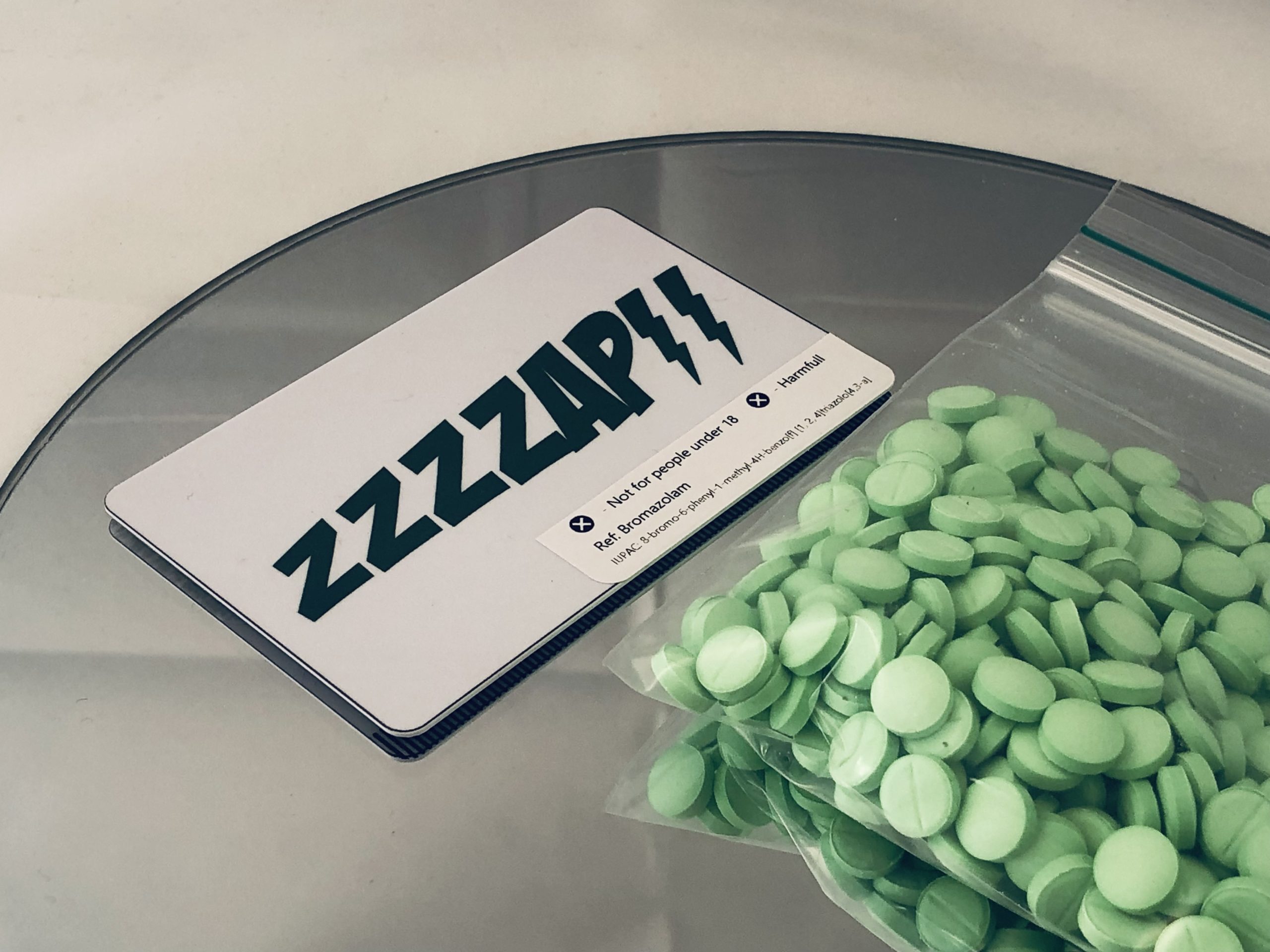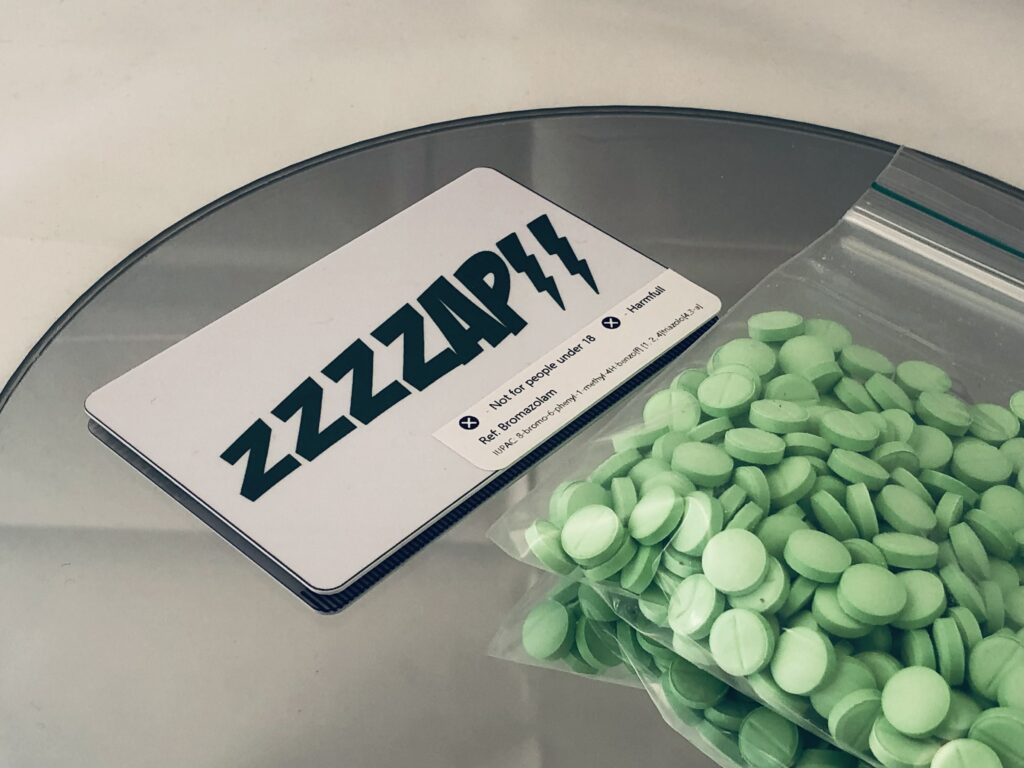What are Benzodiazepines?
Being in the Netherlands Benzodiazepines available with a doctor's prescription. These are sleeping pills and tranquilizers such as Valium (Diazepam) and Seresta (Oxazepam) and these drugs are usually mainly prescribed for patients with psychological problems. Users sometimes also take benzodiazepines to promote sleep, but the doctor is not likely to write a prescription for this purpose. Benzodiazepines have the image of being highly addictive. This explains why doctors are very reluctant to prescribe this medication and ensure that their patients only have the drugs available for a short period of time.
Variations on these Benzodiazepines have been developed within Research Chemicals over the years. These drugs are offered under the collective name “New Benzodiazepines” and are also known among users as “designer Benzos” or “RC Benzos”. These drugs reduce feelings such as anxiety and panic, or are used as a means to promote sleep. The new benzodiazepines include several types such as: Bromazolam, Etizolam, Norflurazepam and Flubromazepam. There are currently approximately 30 different variants in circulation in Europe.
The effect of these drugs can vary enormously: one focuses mainly on relaxing muscles or reducing anxiety, while the other is used as a sleeping aid. The products also differ in strength and duration of action. We can say that all new Benzodiazepines have a narcotic, calming effect. They can help you fall asleep or stay asleep.
The duration and effects of different types of benzodiazepines
Bromazolam
Operating time: 8-12 hours
Effects and side effects: Users of Bromazolam experience the calming effect of the product, because they suffer less from anxiety and their muscles relax. There is also a clear effect on sleep; one falls asleep quickly and the duration of sleep is longer. A pitfall can be that users take the drug again later in the day, which can cause blackouts. They feel a bit dazed and forgetful. This effect can last even a day later.
Flubromazepam
Operating time: 12-24 hours
Effects and side effects: Users of Flubromazepam report experiencing less anxiety. In addition, they fall asleep faster than normal. Here too, taking extra doses can extend the effects for several days. This can be harmful to health and it is suspected that it may have an adverse effect on the heart.
Flunitrazolam
Operating time: 4-8 hours
Effects and side effects: Users of Flunitrazolam say that the drug works very well when falling asleep. This is also reflected in the relatively short duration of action of the drug. Flunitrazolam appears to work after ingesting a small amount. It is therefore advisable not to take too much of the product to prevent blackouts from occurring. The drug is seen as the successor to the already banned Etizolam.
Flubrotizolam (FANAX)
Operating time: 6-36 pm
Effects and side effects: This drug is a derivative of Alprazolam or XANAX. This product is better known to many users as FANAX. The drug has a calming effect and is used to treat anxiety and insomnia. However, it is also known to have a longer duration of action than traditional Benzodiazepines. Users should be aware of this and take this time into account. Flubrotizolam is commonly available as a pellet that can be broken into quarters, allowing the user to determine their own dosage.
Pyrazolam
Operating time: 6-10 hours
Effects and side effects: Users experience that the drug causes the body to relax and anxiety disappears. Sometimes it is literally experienced that arms and legs feel weak. In addition, it can improve the willingness to sleep somewhat. As with other benzodiazepines, there is a risk of blackouts with this drug if the dosage is too high or if it is used frequently.
Norflurazepam
Operating time: 10am-4pm
Effects and side effects: Online reports regularly compare this product to Etizolam and Valium. The drug is somewhat similar to Valium in that it has a mild euphoric effect, unlike XANAX, which has a more sedative effect. It has a calming effect and also has a muscle relaxing effect. Norflurazepam is known for a long period of possible after-effects.
Benzodiazepines and alcohol
Alcohol and Benzodiazepines enhance each other's anesthetic effect. This can lead to dangerous situations, so a combination of both substances is absolutely not recommended. The danger lies in the breakdown process in the body. Both alcohol and benzos must be broken down in the body by the liver. The combination can make this process much slower. This can result in blackouts or life-threatening situations.
The aftereffects of benzodiazepines
Benzodiazepines are used for their calming, sedative effect. They can last a very long time, causing the user to still experience a buzz or hazy feeling a day later. Some have the impression of being completely sober again, while this is not yet the case. This can lead to dangerous situations. For this reason, it is not permitted to drive a vehicle for one to several days after use with officially prescribed benzodiazepines.
Are Benzodiazepines addictive?
As previously described, doctors in the Netherlands are very reluctant to prescribe benzodiazepines because of their addictive effect. With regular use, the effect will decrease, meaning that a user needs more of the drug to experience the same effect. Physical dependence may occur after frequent use. In such a case it can be very dangerous to suddenly stop, due to severe withdrawal symptoms. Addicts will have to reduce their consumption in a controlled manner with the help of a GP or addiction care. Users who take non-prescribed new benzodiazepines on their own initiative will have to consciously keep a finger on the pulse.
Legislation
Over the years, several benzodiazepines have been included in list II of the Opium Act. Making, possessing or selling these substances is prohibited. This concerns variants such as: Clonazolam, Diclazepam, Etizolam, Fenazepam, Flualprazolam and Flubromazolam. A lot of new Benzodiazepines However, they are not (yet) prohibited. They fall under the Commodities Act and are freely available.



